Presidents
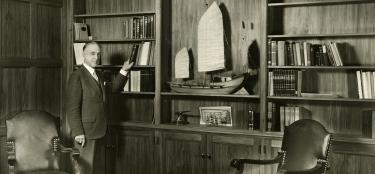
Charles O. Thompson, 1868-1882
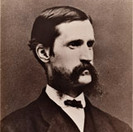
In selecting the first president of the Worcester County Free Institute of Industrial Science, as WPI was originally known, the Board of Trustees faced a momentous task. The Institute was like no other existing educational institution, and its idea of balancing the study of science with its practical application was a bold new concept. On the advice of highly respected educators, the trustees chose Charles Thompson, the 31-year-old principal of Arlington (Mass.) High School, a Dartmouth College graduate, and a civil engineer.
At the Institute's opening ceremonies, President Thompson gave life to the school's mission, saying it "...is intended to furnish an education based on the natural sciences, mathematics, and the modern languages. It is not a place where boys can learn a trade, nor is it to be regarded as an easy road to knowledge."
In the model factory known as the Washburn Shops, students were taught principles of manufacturing as they worked with journeymen tradesmen in producing commercial products. And though sale of the products benefited the Institute, the proper role of the shops on campus would be hotly debated long after Thompson's departure.
Homer T. Fuller, 1883-1894
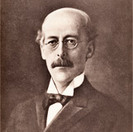
A Dartmouth graduate and ordained clergyman, Homer Fuller began his educational career as had his predecessor, in secondary school teaching. During his tenure in office, the Institute came of age. The original three-year program was expanded to four years. Teachers became faculty members. And in 1887, Worcester County Free Institute of Industrial Science became Worcester Polytechnic Institute.
Under Fuller's leadership, Salisbury Laboratories was built, more than doubling the academic space on campus. The north wing of the Washburn Shops (now known as Stoddard Laboratories) was added. Property was acquired in nearby Holden to establish what is today Alden Research Laboratory. Planning and construction of the Engineering Laboratories (now Stratton Hall), the Power House, the Magnetic Laboratory (now Skull Tomb), and the first official residence of the president (now Sigma Phi Epsilon fraternity), were well under way by the end of Fuller's term.
Thomas C. Mendenhall, 1894-1901
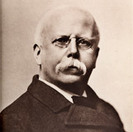
Thomas Mendenhall knew of WPI and its educational philosophy long before he became its third president. He had been president of Rose Polytechnic Institute, where he succeeded Rose's founding president, Charles O. Thompson, in 1886. Three years later he was tapped by President Benjamin Harrison to head the U.S. Coast and Geodetic Survey, a position he filled with great distinction.
Early in his tenure, Mendenhall faced head-on the controversy between those who supported the commercial operations of the Washburn Shops and those who felt them inappropriate on the WPI campus. In the showdown that followed, the commercial shops lived on, but with decreasing vitality, for some 50 years.
Mendenhall's term also saw changes in WPI's physical plant, including the construction of a new building (now Stratton Hall) for mechanical engineering and the improvement of the Power Plant, which enabled it to provide heat to the campus and power to the shops, while also serving as a steam laboratory for students.
Edmund A. Engler, 1901-1911
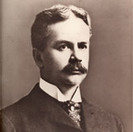
As president, Edmund Engler expended every effort to develop WPI into a first-rate professional school. A scholarly man, he recognized that a major obstacle to this objective was the teaching overload carried by the small but dedicated faculty.
In spite of increased academic demands on students, broadened athletic competition and extracurricular activities served to enhance the quality of life for a student body that doubled during Engler's term in office.
Perhaps the most lasting reminder of the Engler years was the construction in 1907 of the electrical engineering building, now known as Atwater Kent Laboratories. This marvelous structure, the largest engineering laboratory building in the world to that time, was the first college building in the country constructed specifically for the teaching of this increasingly important engineering discipline.
Ira N. Hollis, 1913-1925
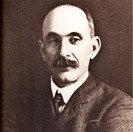
Ira Hollis graduated first in his class at the U.S. Naval Academy and spent 15 years on active Navy duty before beginning a second career in engineering education. Prior to his appointment at WPI, he was dean of the Harvard University School of Engineering.
At WPI, he worked to enhance the role of athletics in the college experience. An enthusiastic alumni body confirmed Hollis' viewpoint by providing the funds to build Alumni Field and Alumni Gymnasium.
During times that tested the entire nation, Hollis introduced organizational changes that resulted in placing WPI on a more parallel course with other major educational institutions. The Board of Trustees, for example, was expanded, and the president and executive committee of the board were given greater powers. In addition, WPI awarded its first honorary degrees during his tenure. George H. Haynes, professor of economics and government and chairman of the faculty, served as interim president from 1923 to 1925.
Ralph Earle, 1925-1939
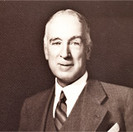
Ralph Earle was the son of Stephen C. Earle, the architect who designed many WPI buildings, including Boynton Hall, and most of Worcester's major buildings of the era. He was the only president to have attended WPI as a student, though an appointment to the Naval Academy ended his brief stay as an undergraduate.
Upon his retirement as a rear admiral, Earle returned home to become the sixth president of WPI. His tenure began auspiciously with the planning and construction of the Institute's first dormitory, named for R. Sanford Riley, Class of 1896.
In the first decade of his presidency, WPI's endowment increased by 45 percent--in spite of the effects of the Great Depression. With the return to better economic times, Earle's ambitious building program was given renewed life: Alden Memorial was begun, plans were made for Higgins Laboratories, and the link he'd long dreamed of to connect the east and west campuses was built. The stately structure, spanning West Street, was dedicated as Earle Bridge following his death.
Wat Tyler Cluverius, 1939-1952
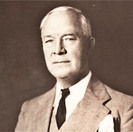
Rear Admiral Wat Tyler Cluverius (USN Ret.) was a Naval Academy classmate and good friend of Ralph Earle. He was already past the age of 65 when he was chosen seventh president of WPI. His physical vigor and popularity as a public speaker were legendary. Both qualities served him well as he guided WPI through the difficult years of World War II and the period of readjustment that followed. Through his efforts, WPI was selected as the site for a Navy V-12 officer training unit during war.
Cluverius championed the development of the School of Industrial Management. He was instrumental in establishing an Army ROTC unit on campus. And in 1952, he announced a building program that included Kaven Hall for civil engineering, the first major renovation of Atwater Kent Laboratories, the remodeling of Boynton Hall, and an addition to Salisbury Laboratories.
Alvin E. Cormeny, 1953-1954
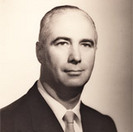
After nearly 30 years of presidents whose qualities of leadership were nurtured in the military, the trustees chose a successful industrialist as WPI's eighth president. Their choice was Alvin Cormeny, who was then vice president at the New York Shipbuilding Corp. in Camden, N.J.
Clearly, WPI was ripe for change, and the choice of a business executive was widely applauded. But somewhere along the line, the hoped-for marriage of WPI's needs and Alvin Cormeny's administrative skills faltered. The fast-paced reorganization methods he had used in industry appeared foreign to the traditional ways of academe. In the period after his brief WPI presidency, Cormeny went on to become vice president of the University of Maryland.
Arthur B. Bronwell, 1955-1962
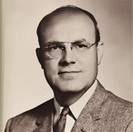
President Bronwell became a key transitional link between WPI's pioneering past and future. He recognized in WPI an institution of quality, but, with a faculty that was largely WPI educated, one that also had a provincial self-image.
Bronwell's efforts to develop WPI into a residential campus, with the construction of the Morgan and Daniels residence halls, began the long process of changing this introverted character. In filling new and vacant faculty positions, he searched nationwide for scholars who would add quality and diversity to the faculty.
He organized the largest capital fund campaign the college had ever conducted to build the two residence halls and Olin Hall of Physics. He converted the empty spaces once occupied by the commercial operations of the Washburn Shops to a materials engineering laboratory and a nuclear reactor facility, The latter was among the first training reactors in the nation to be placed on a college campus.
Harry P. Storke, 1962-1969
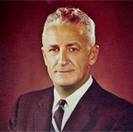
Harry Storke came to WPI after retiring as a lieutenant general following a distinguished Army career. His goal from the beginning was to continue transforming the Institute from a college of competent resources into one of national renown. In the closing years of his tenure, he saw this dream take form as a faculty planning committee he had appointed brought forth for faculty consideration an innovative academic program that would become known as the WPI Plan.
The yearlong Centennial Observance of 1964-65 launched a successful capital fund campaign that resulted in the addition of Goddard Hall, the George C. Gordon Library, Harrington Auditorium, and the Stoddard and Ellsworth-Fuller residence centers (both completed after Storke's departure). Under Storke, the faculty began to play a more responsive role in determining academic policy, the student body grew in size, and women were first admitted as undergraduates.
George W. Hazzard, 1969-1978
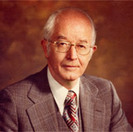
WPI sought out George Hazzard, formerly a scientist at General Electric Company and an educator at St. Lawrence and Washington universities, to lead the Institute through the demanding implementation of the WPI Plan. As was the case for so many new faculty members and students at that time, it was the challenge and excitement of the Plan that attracted Hazzard. And it was to this challenge that he marshaled the resources of WPI and its people. Under his guidance, WPI established academic degree programs in management, biology, and biomedical engineering. The school's first off-campus residential project center, in Washington, D.C., was launched during the Hazzard years.
The Plan spawned a new realization at WPI of the importance of both academic focus and quality of life for students. The "Greening of the Campus" became the slogan for efforts to minimize the competition between people and automobiles around the east campus academic buildings.
Hazzard recognized the need to bring the entire campus up to first-class condition by renovating Boynton Hall and the Foundry (now the Project Center) to the standards of recent new construction to attract the most qualified faculty and students in the years ahead.
Edmund T. Cranch, 1978-1985
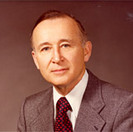
To Edmund Cranch fell the task of fine-tuning the WPI Plan to meet the changing needs of the 1980s. Using the skills developed during his 30-year career in engineering education, the former dean of engineering at Cornell University guided the WPI community's lively discussions of the mission of the Institute while leading the college during a period of dramatic growth.
Under his leadership, WPI raised funds for the renovation of Atwater Kent Laboratories and the Washburn Shops, as well as WPI's outdoor recreational facilities. Construction of Founders Hall was begun to provide sorely needed campus housing. New academic initiatives included programs leading to the M.S. degree in fire protection engineering and the master of business administration, as well as doctoral programs in biology and biotechnology, computer science, and materials science.
Cranch led initiatives to enhance cooperative ventures with industry, including the development of the Manufacturing Engineering Applications Center, the Management of Advanced Automation Technology program, and the expansion of cooperative education. And he dramatically increased the use of computers throughout the campus and expanded WPI's foreign exchange programs in Europe.
Jon C. Strauss, 1985-1994
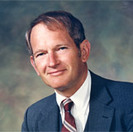
Jon Strauss, an electrical engineer by training, came to WPI with considerable experience in college finances and strategic planning, having served as vice president for budget and finance at the University of Pennsylvania and vice president for administration at the University of Southern California. Those skills proved valuable as WPI entered a challenging period that saw a decline in the national pool of college-age men and women, a decline in interest in engineering, and an increase in the demand for financial aid by WPI students. Strauss spearheaded the development of a strategic plan for WPI to address those issues and help chart a course for the future as a more comprehensive technological university.
Believing a vital program of scholarship and research was the key to gaining wider recognition and invigorating WPI's educational programs, Strauss helped build an infrastructure for scholarship--including many new laboratories and research centers--and oversaw a significant growth in external support for research. A measure of the success of this effort was the tripling of the four-year average of Ph.D.s awarded by WPI and the elevation of the university to the status of a doctoral university by the Carnegie Institute for the Advancement of Teaching.
Strauss' term also saw the near doubling of the endowment; a highly successful $63.7 million capital campaign that raised funds for the construction of Fuller Laboratories, the renovation of Alden Memorial, and the expansion of the campus, among other goals; the installation of a campus computer network and the "computerization of the campus," a significant growth in enrollment by women and minority students; the founding of WPI's first overseas project center (in London) and the emergence of the global projects program; and the significant growth and diversification of the Board of Trustees.
Edward Alton Parrish, 1995-2004
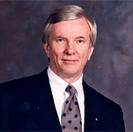
Like his predecessor, Edward Parrish was an electrical engineer who brought to WPI a record of success as an academic administrator, including posts as head of the Electrical Engineering Department at the University of Virginia and dean of the School of Engineering at Vanderbilt University. Before coming to WPI he had also won recognition for his work in engineering accreditation. As chair of the Engineering Accreditation Commission of the Accreditation Board for Engineering and Technology, he played a pivotal role in the development of new accreditation criteria for engineering programs that, coincidentally, closely mirrored the philosophy of the WPI Plan. During his first year at WPI, the university became one of two schools to pilot-test the new criteria.
Early in his tenure, Parrish oversaw the development of a strategic plan that guided the university toward such milestones as the significant expansion of its global project program, major campus improvements (including a $14 million program to renovate all major residence halls), significant growth in sponsored research, increases in the size and stature of the faculty, a major commitment to outreach and enrichment programs for students in grades K-12 (particularly girls and students of color), and consistent recognition as one the nation's top universities.
Parrish also oversaw a $154 million capital campaign that included among its many successes the construction of the Campus Center (a long-anticipated campus addition), the creation of many new teaching and research facilities, and a major upgrade to the campus computer network. With the establishment of the Worcester Community Project Center, for student project work aimed at improving the city, and the Bioengineering Institite, which translates faculty research into commercial ventures, and with the launch of a joint venture with the city's redevelopment authority to transform an 11-acre former industrial site into Gateway Research Park at WPI, a mixed-use life-sciences based development, WPI also became a significant partner in the economic development of its home city and region during President Parrish's term.
Dennis D. Berkey, 2004-2013
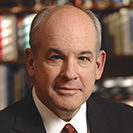
Dennis D. Berkey served as WPI's 15th President, 2004-2013, during one of the most dynamic periods of growth in the university's history. During the Berkey administration, WPI attracted record numbers of some of the best and brightest students nationwide, as demand for a WPI education grew tremendously; applications for admission doubled during his tenure, and the academic quality and diversity of applicants increased continually. Fiscally, despite one of our nation's worst recessions, Berkey led the university from operating deficits to a position of financial strength and stability, holding tuition increases well below national averages and increasing compensation of faculty and staff.
A champion of an interdisciplinary, project-based approach to education, Berkey invested in a range of new programs, including bioengineering, life sciences, interactive media and game design, environmental studies, learning sciences, architectural engineering, and robotics; in 2006, WPI became the first university in the nation to offer a B.S. in robotics engineering, and that program quickly became the third most popular major at WPI. Later, the institute added Master's and Ph.D. programs, becoming the first university in the nation to have all three levels of degree programs in robotics engineering. Berkey was also a driving force behind the establishment of the WPI School of Business and the introduction of academic deans to the university; in 2010, the university instituted Deans of Engineering, Arts and Sciences, and Business. The university’s Fire Protection Engineering program, begun in 1979 when WPI offered the nation’s first master’s degree program in this field, was elevated to the status of a full department. The university's research funding grew nearly threefold during his presidency.
The city of Worcester also benefitted from Dennis Berkey's leadership. He was chief architect of WPI's voluntary "Payment in Lieu of Taxes" (PILOT) agreement with the city of Worcester, which began in 2009 and directly supports Worcester Public Library and Institute Park with over $9 million in funding over 25 years. In addition, under Berkey's leadership, WPI led the investment of more than $110 million in Gateway Park, a comprehensive urban redevelopment project that has transformed a blighted and underutilized area in the core of the city into a clean, thriving, mixed-use park that is home to a growing range of academic, research, and commercial enterprises. Gateway Park is the home of several WPI divisions, including the thriving Corporate and Professional Education Division, a progressive educational partner with companies in the medical, energy, and defense industries.
Laurie A. Leshin, 2014-2022

When Laurie Leshin arrived in 2014 to serve as WPI’s 16th president—a position previously held only by men—she brought with her an esteemed track record as a geochemist and NASA space scientist. In her eight years leading the university, WPI grew the number of women undergraduates considerably; created new priorities for increasing diversity, equity, and inclusion, including dramatic increases in the diversity of university leadership; doubled research funding; expanded WPI’s pioneering Global Projects Program to more than 50 locations worldwide; and developed and improved campus infrastructure, most notably The Innovation Studio, Messenger Residence Hall, Unity Hall, Kaven Hall, and WPI Seaport.
Leshin steadily focused on elevating the essential, immediate foundation of what makes WPI so distinctive: a project-based approach with equal parts teaching and research by devoted faculty and staff. Under her leadership, WPI guaranteed scholarships for every undergraduate student, allowing all students the opportunity to participate in the Global Projects Program, and increased access to students from more diverse backgrounds through a test-blind admissions program and by investing heavily in financial aid. She led the efforts to establish three distinct schools at WPI (Arts & Sciences, Engineering, and Business) and in 2019 created the university's fourth school: The Global School, which creates a focal point and platform for academic and research programs and global partnerships.
During Leshin’s tenure, the university developed an innovative and equitable promotion policy to help address important diversity goals, fostering a more inclusive and supportive environment for all faculty, and positively impacting the career trajectory of mid-career female faculty members. Leshin also pioneered an innovative new teaching track to tenure and extended secured contract appointments for full-time teaching faculty, which not only fosters equity (and representation within faculty governance) and guarantees academic freedom, but also reinforces and rewards excellent and innovative teaching.
University accolades during her tenure ranged from The Wall Street Journal/Times Higher Education, which honored WPI as the university that is best at balancing teaching and research, to the 2016 Bernard M. Gordon Prize for Innovation in Engineering and Technology Education from the National Academy of Engineering. This last honor resulted in the launch of WPI’s Center for Project-Based Learning in 2016, an investment that has allowed WPI to educate, guide, and support hundreds of other universities in implementing project-based learning on their campuses.
Leshin's leadership also coincided with the completely unknown and unprecedented territory of a global pandemic, a nationwide racial reckoning, a drastically shifting higher education landscape, and a growing mental health crisis facing the nation's youth, exacerbated by the COVID-19 pandemic. With her laser-sharp attention to detail and reliance on both science and the expertise of her leadership team, Leshin navigated these challenges and was the constant for the community in these times of change.